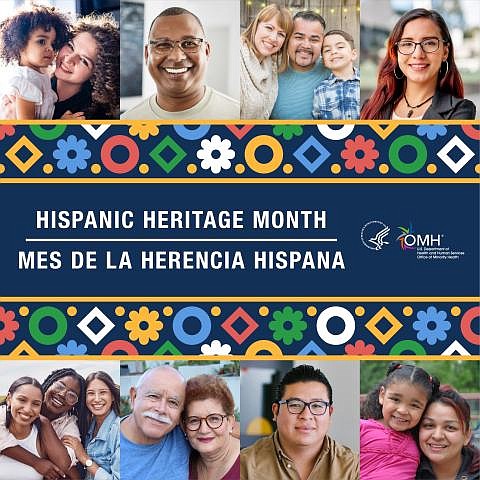Bridging Health Gaps: Understanding Hispanic/Latino Health Disparities
Style Magazine Newswire | 10/5/2023, 9:24 a.m.
Hispanic/Latino health disparities in the United States are a complex and pressing issue that demands attention. In this article, we will explore the challenges faced by Hispanic/Latino Americans, shedding light on their unique healthcare needs and the factors contributing to health inequalities. Additionally, we will discuss the significance of National Hispanic Heritage Month and initiatives aimed at improving healthcare access for this vibrant and diverse community.
The Healthcare Divide:
1. High Uninsured Rates:
In 2022, Hispanic/Latino Americans grappled with the highest uninsured rates among racial and ethnic groups. A staggering 27.6 percent of Hispanic/Latino adults lacked health insurance, compared to 7.1 percent of non-Hispanic Asians, 7.4 percent of non-Hispanic whites, and 13.3 percent of non-Hispanic Black adults.
2. Obesity and Chronic Illness:
Hispanics/Latinos face greater challenges with obesity compared to non-Hispanic whites. They also bear a significant burden of chronic lower respiratory diseases, liver disease, influenza and pneumonia, suicide, and kidney disease.
3. Leading Causes of Death:
Among the leading causes of death for Hispanics/Latinos are cancer, heart disease, unintentional injuries, stroke, diabetes, and Alzheimer's disease.
4. Barriers to Healthcare Access:
Over 10 percent of Hispanic/Latino adults reported not receiving necessary medical care due to cost constraints in 2022, while only 5.2 percent of non-Hispanic white adults faced similar challenges.
Understanding Hispanic/Latino Health:
1. National Hispanic Heritage Month:
Celebrated from September 15 to October 15, National Hispanic Heritage Month honors the rich history, traditions, and cultural diversity of Hispanic/Latino Americans. This observance provides an opportunity to acknowledge their contributions to society.
2. The Role of HHS Office of Minority Health (OMH):
The OMH is dedicated to enhancing Better Health Through Better Understanding for Hispanic/Latino individuals. By offering culturally and linguistically competent healthcare services, information, and resources, patients are empowered to make informed decisions for healthier outcomes.
3. Health Disparities Factors:
Hispanic/Latino Americans may have a longer life expectancy than their non-Hispanic white counterparts but often experience poorer health. Factors such as language and cultural barriers, limited access to preventative care, and lack of health insurance play a crucial role in shaping their health outcomes.
Unity in Diversity:
1. Todos Somos, Somos Uno:
This year's national theme, "Todos Somos, Somos Uno: We Are All, We Are One," highlights the diversity within the Hispanic/Latino population and the strength that unity brings. Representing 18.8 percent of the U.S. population, Hispanic/Latino Americans have roots in Spanish-speaking countries across South and Central America, Mexico, Puerto Rico, Cuba, the Dominican Republic, and Spain.
Taking Action:
1. OMH's Hispanic/Latino Population Profile:
To raise awareness about the unique health concerns affecting Hispanic/Latino Americans, consider sharing OMH's Hispanic/Latino Population Profile.
2. U.S. Census Bureau's Insights:
Explore the U.S. Census Bureau's website to gain a deeper understanding of the heritage and diversity within the Hispanic/Latino community.
3. Advancing Educational Equity:
Visit the White House Initiative on Advancing Educational Equity, Excellence, and Economic Opportunity for Hispanics website to learn about federal efforts to enhance educational equity and economic opportunities for Hispanic/Latino students, families, and communities.
Hispanic/Latino health disparities are a critical issue that requires comprehensive attention and action. By acknowledging the challenges faced by this vibrant community, celebrating their rich heritage during National Hispanic Heritage Month, and supporting initiatives aimed at improving healthcare access, we can take significant steps towards ensuring better health outcomes for all.




